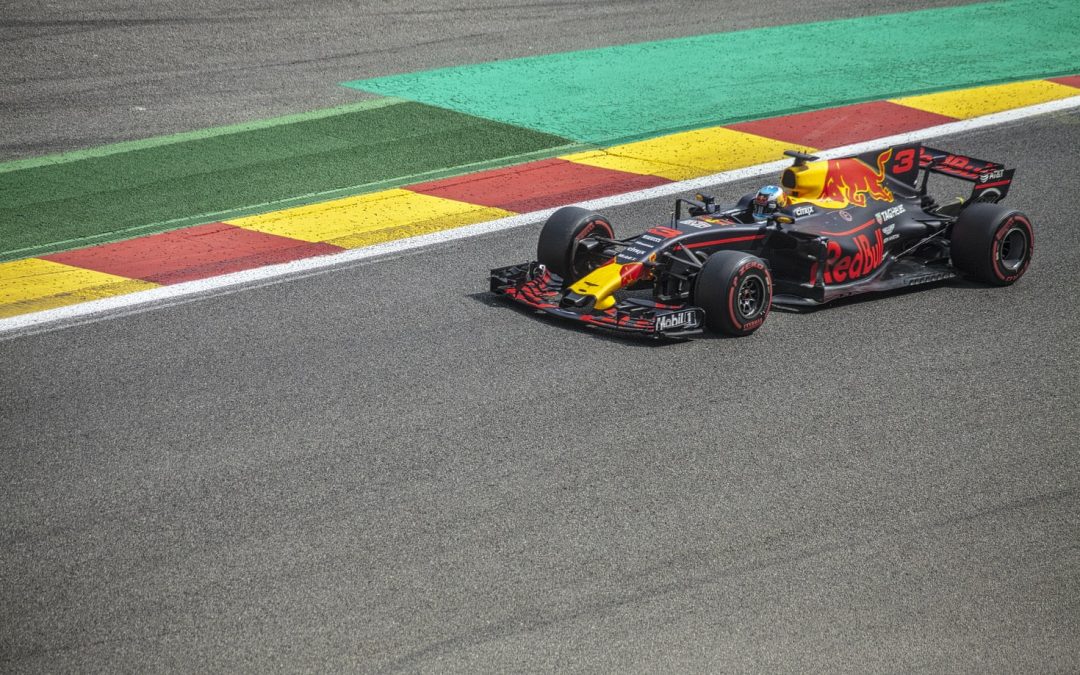F1 cars are pure magic. These magnificent beasts of technology can turn, squeeze and exhibit grip levels that you won’t see anywhere else but on an F1 race track. And apart from the sheer ingenuity that goes into making these brilliant vehicles, the grit, intelligence, and courage displayed by F1 drivers make their performances on the track nothing short of extraordinary.
We could rave on, but suffice to say, we think the F1 to be darn cool, so we decided to find out more about this monumental sporting event. Here are 8 amazing facts about F1 racing that you need to know:
1. F1 Car Components:

Credit Image: Unsplash
Each F1 car is made up of about 80,000 different components. Sometimes, we think that making an F1 car is akin to making a damn good cocktail, and somehow managing to fit all of it in just a grain of sand. Just think about it - These astounding cars are made of countless gizmos, wires, and parts, and are an extremely compressed 720kg system that’s made of hydraulics, carbon, fuel, tyres, and other innumerable mechanical devices. We don’t know about you, but that just sends us into a state of awe.
2. The Safety Device:

The HALO safety device above the cockpit can take up to 5 tonnes worth of impact
The F1 has come a long way in terms of protecting the lives of its racers, and thanks to pioneers like Sir Jackie Stewart, drivers no longer run such a high risk of dying in a race as they did in the past. The HALO device has done its job superbly and is probably what saved Charles Leclerc from a major head injury at the 2018 Belgian Grand Prix.
Each HALO safety device is rigorously checked by the FIA and is formed using titanium, which is a strong but light material and can survive an impact equivalent to either two double-decker buses, five elephants, or six F1 cars. My goodness!
3. 100 miles per hour in 4 seconds:

Credit Image: Unsplash
In just 4 seconds, an F1 car can go from 0 to 100 miles per hour, and back down again.We all know that F1 cars are fast, but these stats are just madness! It's simply a feat of nature how F1 engineers have managed to brilliantly develop the gearboxes, ERS battery systems, engines, and driveshafts that make F1 cars go as fast as they do today.
4. F1 Car Brakes:

The brakes of an F1 car can reach 1000 degrees celsius and still work
Okay. So, when an F1 driver brakes, what happens is that the intense kinetic energy from the car is converted into thermal energy, thus causing the car to slow down. Our question was: How exactly does a car that’s going that quickly slow down without setting itself on fire? Well, F1 engineers have achieved another great feat by cleverly including small holes in the calipers and brake ducts of cars, which then guides airflow into the brakes so that they can be cooled down quickly and repetitively.
It's little wonder then that many often talk about how braking late in an F1 car is one of the most important skills to have - And we see how important this is in the performances of legends like Ayrton Senna, Lewis Hamilton, and Daniel Ricciardo.
5. Drivers lose weight in 2 hours:

Credit Image: Unsplash
Drivers in the Singapore Grand Prix can lose up to 6kg in a 2-hour drive
If you’re looking to lose weight pronto, you might wanna get in an F1 car in Singapore. All you need is to take a 2-hour spin, and you’ll find yourself about 6kg lighter. It’s so hot and humid in Singapore that cockpits can reach temperatures of up to 60 degrees celsius, and because drivers only have limited amounts of water they can drink in a race, they lose all that weight simply by dehydration.
We take our hats off to the unfailing mental and physical capacities of F1 drivers.
6. Upside down in the Tunnels:

An F1 car could zip along a tunnel at 120 miles per hour, upside-down
Because of an amazing thing called downforce, an F1 car could literally drive upside down without falling off! What is downforce? Simply put, downforce is what pushes F1 cars onto the track, and it exists because of the different pressures that are created by the aerodynamic devices in each car.
Read More - Your trash is our treasure: Buy or sell old, damaged cars at competitive prices in Singapore
So, as the number of downforce increases, the further an F1 driver will be able to squash the tyres into the track, the faster they’ll be able to take a corner, and the better grip they’ll have.
F1 cars produce so downforce that they can literally drive upside down! What’s even more amazing is that they can do this from a relatively low 120 miles per hour.
7. The cost of F1 Car :

Credit Image: Unsplash
An F1 car would cost about $7million dollars to make. F1 is the world's most expensive sport, and it’s clear why: The cost of building the external structure of an F1 alone would cost around $650,000-$700,000, and that’s before we factor in costs such as new technological improvements, other car materials, crew members, and more.
8. F1 race track to be welded onto the ground:

Credit Image: Unsplash
Like we saw in the 2020 Portimao Grand Prix with the prolific Sebastian Vettel (in case you didn’t know - he ran over a drain cover and pulled it clean off), F1 cars can have such low pressure underneath them that they end up ripping stuff off the ground. This is why the FIA thoroughly checks the race track to make sure that stuff like manhole covers and drains are all-welded properly to the ground. Otherwise, cars could get destroyed, and people badly hurt.
We hope these 8 cool facts about F1 racing wowed you as much as they did us.
Do you have any interesting facts of your own to share? Let us know in the comments below!

